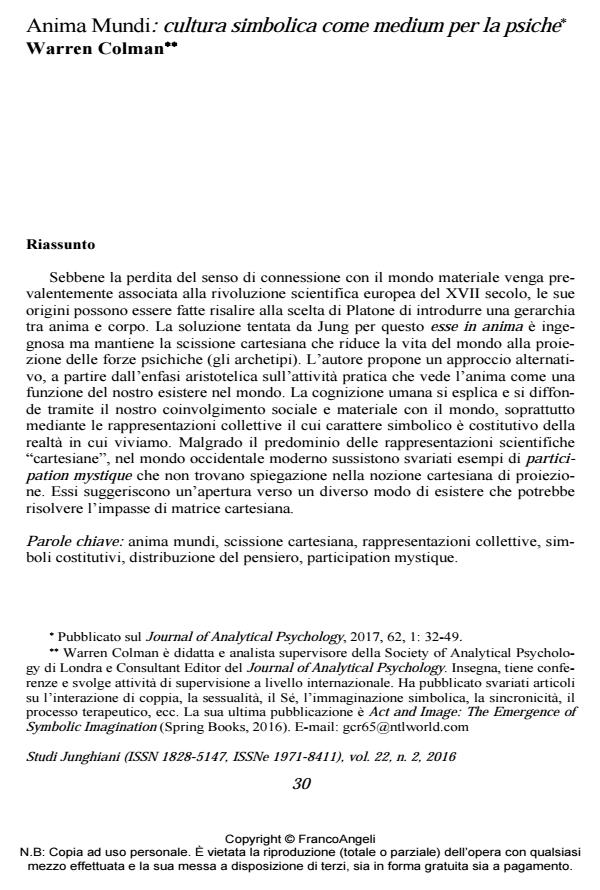Anima Mundi: cultura simbolica come medium per la psiche
Titolo Rivista STUDI JUNGHIANI
Autori/Curatori Warren Colman
Anno di pubblicazione 2017 Fascicolo 2016/44
Lingua Italiano Numero pagine 19 P. 30-48 Dimensione file 235 KB
DOI 10.3280/JUN2016-044004
Il DOI è il codice a barre della proprietà intellettuale: per saperne di più
clicca qui
Qui sotto puoi vedere in anteprima la prima pagina di questo articolo.
Se questo articolo ti interessa, lo puoi acquistare (e scaricare in formato pdf) seguendo le facili indicazioni per acquistare il download credit. Acquista Download Credits per scaricare questo Articolo in formato PDF

FrancoAngeli è membro della Publishers International Linking Association, Inc (PILA)associazione indipendente e non profit per facilitare (attraverso i servizi tecnologici implementati da CrossRef.org) l’accesso degli studiosi ai contenuti digitali nelle pubblicazioni professionali e scientifiche
Sebbene la perdita del senso di connessione con il mondo materiale venga prevalentemente associata alla rivoluzione scientifica europea del XVII secolo, le sue origini possono essere fatte risalire alla scelta di Platone di introdurre una gerarchia tra anima e corpo. La soluzione tentata da Jung per questo esse in anima è ingegnosa ma mantiene la scissione cartesiana che riduce la vita del mondo alla proiezione delle forze psichiche (gli archetipi). L’autore propone un approccio alternativo, a partire dall’enfasi aristotelica sull’attività pratica che vede l’anima come una funzione del nostro esistere nel mondo. La cognizione umana si esplica e si diffonde tramite il nostro coinvolgimento sociale e materiale con il mondo, soprattutto mediante le rappresentazioni collettive il cui carattere simbolico è costitutivo della realtà in cui viviamo. Malgrado il predominio delle rappresentazioni scientifiche "cartesiane", nel mondo occidentale moderno sussistono svariati esempi di participation mystique che non trovano spiegazione nella nozione cartesiana di proiezione. Essi suggeriscono un’apertura verso un diverso modo di esistere che potrebbe risolvere l’impasse di matrice cartesiana.
Parole chiave:Anima mundi, scissione cartesiana, rappresentazioni collettive, simboli costitutivi, distribuzione del pensiero, participation mystique.
Warren Colman, Anima Mundi: cultura simbolica come medium per la psiche in "STUDI JUNGHIANI" 44/2016, pp 30-48, DOI: 10.3280/JUN2016-044004